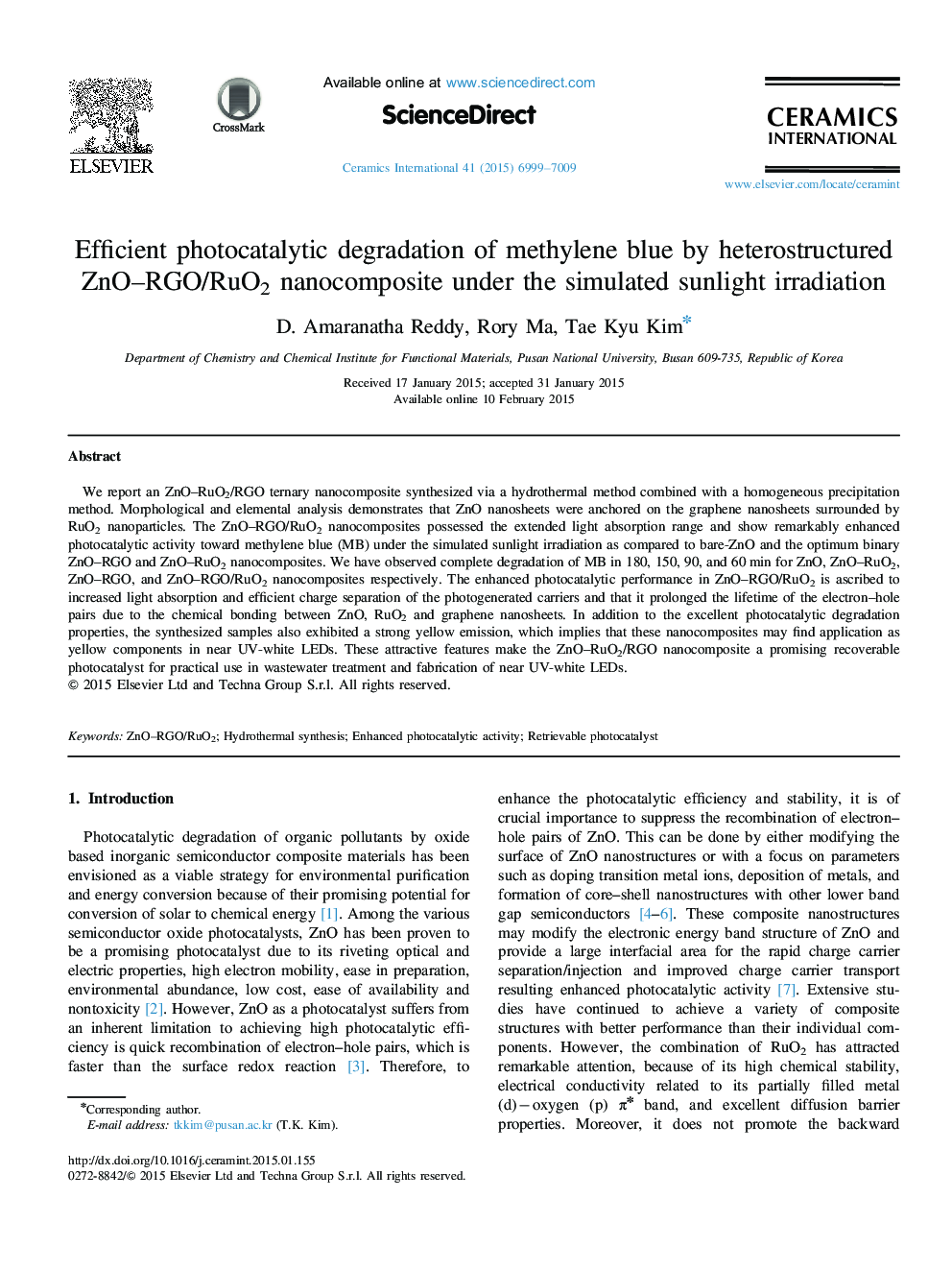| Article ID | Journal | Published Year | Pages | File Type |
|---|---|---|---|---|
| 1460438 | Ceramics International | 2015 | 11 Pages |
We report an ZnO–RuO2/RGO ternary nanocomposite synthesized via a hydrothermal method combined with a homogeneous precipitation method. Morphological and elemental analysis demonstrates that ZnO nanosheets were anchored on the graphene nanosheets surrounded by RuO2 nanoparticles. The ZnO–RGO/RuO2 nanocomposites possessed the extended light absorption range and show remarkably enhanced photocatalytic activity toward methylene blue (MB) under the simulated sunlight irradiation as compared to bare-ZnO and the optimum binary ZnO–RGO and ZnO–RuO2 nanocomposites. We have observed complete degradation of MB in 180, 150, 90, and 60 min for ZnO, ZnO–RuO2, ZnO–RGO, and ZnO–RGO/RuO2 nanocomposites respectively. The enhanced photocatalytic performance in ZnO–RGO/RuO2 is ascribed to increased light absorption and efficient charge separation of the photogenerated carriers and that it prolonged the lifetime of the electron–hole pairs due to the chemical bonding between ZnO, RuO2 and graphene nanosheets. In addition to the excellent photocatalytic degradation properties, the synthesized samples also exhibited a strong yellow emission, which implies that these nanocomposites may find application as yellow components in near UV-white LEDs. These attractive features make the ZnO–RuO2/RGO nanocomposite a promising recoverable photocatalyst for practical use in wastewater treatment and fabrication of near UV-white LEDs.
